Table of contents
Arugula or rocket ( Eruca sativa or Diplotaxis tenuifolia) is the name given to various plant species from the family of cruciferous plants. They are popular raw as a salad and are often available organically.
Use in the kitchen
The characteristic feature of rocket is its long, serrated leaves. Depending on the variety, it tastes mildly nutty or spicy. The taste comes from the mustard oils it contains.
Can you eat rocket raw? Raw rocket tastes wonderful raw in a salad. Because the flavor is very intense, it is best mixed with other leaf salads, such as iceberg lettuce or romaine lettuce. Combined with fruit, e.g. as a pear and rocket salad with quinoa, it brings a little spiciness to the sweet dish. An oil-free salad dressing can be made with walnuts, either as a light vinaigrette with balsamic vinegar or as a dressing with orange juice and ginger. Alternatively, an oil-free dressing can be made from avocado and lemon juice. A topping of pine nuts, linseed or sunflower seeds gives the salad a crunchy, nutty addition.
Rocket is also suitable for seasoning or as a topping for warm dishes. It tastes delicious on vegan pizza, risotto, tomato soup and pasta dishes. It is important to add the rocket leaves just before serving, as the essential oils that give them their flavor evaporate when heated for a long time. Raw vegan pesto made from rocket follows here:
Recipe for raw vegan rocket pesto
Ingredients (for 4 people): 100 g rocket, 3 garlic cloves, 40 g walnuts, 2 tbsp yeast flakes, 40 ml lemon juice, 1 pinch of salt,black pepper. Optional: drinking water.
Preparation: Peel the garlic cloves and wash the rocket. Puree the garlic cloves with rocket, walnuts, yeast flakes and lemon juice in a blender until smooth and season with salt and pepper. If necessary, add a little drinking water to ensure the consistency is not too dry. The pesto tastes best fresh, but you can also keep it tightly sealed in the fridge for 2 to 3 days.
Vegan recipes with rocket (raw) can be found under the note: " Recipes that have the most of this ingredient ".
| Not only vegans or vegetarians should read this: Vegans often eat unhealthily. Avoidable nutritional errors. |
Purchasing - Storage
Rocket can often be found in the range of large supermarket chains such as Coop, Migros, Denner, Volg, Spar, Aldi, Lidl, Billa, Rewe, Edeka or Hofer, occasionally also in controlled organic quality (organic quality), usually packaged in plastic bags or plastic trays. Rocket can also be bought in organic supermarkets such as Denn's Biomarkt or Alnatura, as well as seasonally at the weekly market. Rocket is harvested in open-air cultivation from May to October. Rocket from Italy and from greenhouse cultivation is available all year round. 1
The availability of raw rocket in the supermarkets mentioned varies depending on the size of the store, catchment area, etc. Our recorded food prices for the DA-CH countries can be found above under the ingredient image - and by clicking on them you can see their development at various suppliers.
Storage tips
Rocket from the packaging should be prepared as soon as possible. Wrapped in a damp cloth, rocket can be stored in the refrigerator for two to three days. 1
Found in the wild
Both the salad rocket ( Eruca sativa) and the wild rocket ( Diplotaxis tenuifolia) occur in the wild. They can be found occasionally on roadsides, in rubble heaps or fields. 9,10
Ingredients - Nutritional values - Calories
Rocket (raw) contains 25 kcal per 100 g and is therefore low in calories. The protein content is low at 2.6 g/100g and there is also hardly any fat at 0.66 g/100g. It contains around 3.6 g/100g carbohydrates and 1.6 g fiber. 2
Does arugula contain vitamin K? Arugula is rich in vitamin K. 100 g of arugula contains 109 µg, which corresponds to 145% of the daily requirement, similar tolettuce and romaine lettuce. Kale (705 µg/100g) and chard (830 µg/100g) have very high vitamin K values. This far exceeds the recommended daily dose when eaten raw. 2 However, the absorption rate is 20-70% (the absorption rate of the vitamin in the body). Toxic properties of vitamin K from food are not known. 3
Folate (folic acid) is also present. 100 g of rocket contains 97 µg, which corresponds to 49% of the daily requirement. More folate is found in romaine lettuce (136 µg/100g) and endive (142 µg/100g). This corresponds to a coverage of 68% and 71% of the daily requirement respectively. Young spinach, which can be eaten raw as a salad, even contains 194 µg/100g, which covers 97% of the daily requirement of folate. 2
Rocket, along with other dark green vegetables, is a good source of calcium. The 160 mg/100 g covers 20% of the daily requirement. Kale and lovage have similar values (150 mg/100 g). Nuts and seeds are also good sources of calcium: black sesame (975 mg/100 g) and almonds (269 mg/100 g) and linseed (255 mg/100 g). 2
You can find all the ingredients of arugula, how much it covers your daily needs and comparison values with other ingredients in our nutrient tables below the ingredient image.
Effects on health
How healthy is rocket? Rocket is rich in vitamin K. The body needs this vitamin for blood clotting. It also prevents calcium deposits in soft tissue and supports the regulation of cell processes (e.g. cell division). Vitamin K also inhibits bone loss, because the enzyme osteocalcin, which regulates bone mineralization, is dependent on vitamin K. 3
Rocket contains many secondary plant substances. It is rich in mustard oil glycosides, which are responsible for the sharp taste. Among other things, erucin has been identified, which is considered an anti-carcinogenic agent. 20 In addition to mustard oils, rocket also contains flavonols such as quercetin and kaempferol. 11 Flavonols are antioxidants that have antimicrobial and anti-carcinogenic effects. 3
Dangers - Intolerances - Side effects
Is too much rocket unhealthy? Rocket naturally contains nitrate, as it needs this as a source of nitrogen for growth. 13 In contrast to other leafy and root vegetables, rocket has very high nitrate levels of over 3000 mg/kg. 12 The legal maximum level is even 6000 mg/kg in the summer months and 7000 mg/kg in the winter months. 17 For this reason, it is not recommended to eat rocket daily or to consume too large quantities. The WHO considers up to 3.7 mg of nitrate per kilogram of body weight per day to be safe for adults. 19 You can read more about the nitrate and nitrite problem at Batavia salad.
The benefits of a high proportion of vegetables in the diet far outweigh the potential risk of slightly increased nitrate and nitrite levels. Therefore, one should not limit the consumption of vegetables. In addition, positive effects of nitrate and nitrite are also known, for example on blood pressure 18 or the efficiency of muscle contraction. 21
Risk of confusion
There is a risk of confusion with common ragwort, also known as groundsel ( Senecio vulgaris). This grows wild and as a weed in professional rocket cultivation. 6 The weed is also sometimes found in purchased rocket. 7 Consumers should ensure that there is no confusion or mixing and, if in doubt, sort out any foreign leaves. 7 Common ragwort contains pyrrolizidine alkaloids (PA). These are natural plant ingredients that protect the plant. However, high amounts of these lead to liver damage in humans and are suspected of causing cancer. 8
Ecological footprint - animal welfare
The CO 2 footprint of regional rocket is 0.3 kg CO 2 eq/kg and is therefore similar to that of spinach (0.2 kg CO 2 eq/kg) or lamb's lettuce (0.3 kg CO 2 eq/kg). 22 If you buy imported rocket, the ecological footprint increases due to the transport and the cultivation method. Rocket can usually be bought in plastic packaging in stores, and it is rarely available loose. This additional packaging has a negative impact on the ecological footprint, which is why it is better to use unpackaged rocket.
We have not found any figures for the amount of water needed for 1 kg of rocket, but to produce 1 kg of lettuce in general you need about 237 L of water. 23
In conventional rocket cultivation, synthetic herbicides or pesticides are used to combat unwanted plants or insects. However, these are often found as residues in the finished product, which was also confirmed for rocket in a study from 2014. In some cases, the amounts found were higher than the permitted residue levels. 22 When shopping, it is best to buy organically grown products.
Worldwide distribution - cultivation
Rocket ( Eruca sativa) was originally cultivated around the Mediterranean and its use has been documented since Roman times. It is naturally distributed in the Mediterranean region and extends across southern Europe, North Africa, Iran, India and Pakistan. Wild rocket ( Diplotaxis tenuifolia) and other Diplotaxis species are found in the Mediterranean region as well as India, Pakistan, Cape Verde and Nepal. 11 Rocket is still cultivated in these areas today.
Cultivation - Harvesting
Rocket can be planted well in the garden bed, balcony box or in a pot. It needs a sunny to partially shaded location and humus-rich, loose soil. The soil should be loosened frequently with a small hoe to ensure good ventilation. Rocket seeds can be sown directly outdoors from April to September. Since you can only harvest two or three times before it flowers, it is worth sowing in batches every three weeks. This way you can harvest fresh rocket from spring to autumn. Plant the seeds in grooves 0.5 cm deep and 15 cm apart. Then cover the rocket seeds with a maximum of 0.5 cm of soil, press down well and water well. In order for the plants to sprout after 10 to 14 days, the seedlings must be kept moist; it is not necessary to separate young plants. 4
Depending on the location and the time of year, you can start harvesting after 4 to 7 weeks, when the leaves are 5 to 8 centimeters long. Cut the rocket off 3 to 4 cm above the ground using sharp scissors. If you want to protect the plant, only harvest the outer leaves so that the plant can grow back. This way, you can harvest the rocket several times. 5
When eaten raw in a salad, the young leaves taste best because they are less spicy. The older leaves can be used as herbs for seasoning because of their intense flavor. The leaves should be harvested before they flower, otherwise they taste bitter.
Conventionally grown rocket comes from large areas of fields and is harvested by machine. It is then sorted and packaged. 14 Seasonally grown organic rocket is preferable because it normally contains lower nitrate levels. 15 However, there are also studies in which organic rocket had higher nitrate levels than conventional rocket. 16
Further information
The term arugula is usually used to describe two plant species from the Brassicaceae family: the salad rocket and the wild rocket. Both varieties occur in the wild and cultivated. 9,10
Salad rocket, also known as oil rocket or mustard rocket ( Eruca sativa), has sinuous, pinnate leaves with two to four pinnate sections on each side. These can be entire or toothed. The leaf ends with a single enlarged end section. 9 Salad rocket grows very quickly and is not winter hardy. Its taste is mild and nutty because it does not contain so many mustard oils. 4
Wild rocket, also known as spice rocket or narrow-leaved double seed ( Diplotaxis tenuifolia), has deeply pinnate leaves that are strongly serrated. The end section is as wide as the lower part of the leaf. 10 It is winter hardy, which is why it can be cultivated for several years. 4 It tastes rather spicy because it contains more mustard oils. 1
Alternative names
Rucola is also called Rauke, Salatrauke or Senrauke in German. The name Rucola comes from Tuscany. In other regions of Italy it is known as Ruchetta or Rughetta. In English it is called rocket salad or arugula.
Other uses
In India and Pakistan, rocket is also often used as an oil and fodder plant. 11
Bibliography - 23 Sources
| 1. | Apotheken Umschau. Rucola: Aromatischer Salat. 2014. |
| 2. | USDA United States Department of Agriculture. |
| 3. | Biesalski H K, Grimm P. Taschenatlas der Ernährung. Stuttgart: Georg Thieme Verlag; 2015, 6. Auflage. |
| 4. | Planatura.garden. Rucola anbauen: Standort, Aussaat & Mischkultur. |
| 5. | Planatura.garden. Rauke, Rucola & Co. – Herkunft und Anbau. |
| 6. | Industrieverband Agrar. iva-magazin, Feldsalat: Nach der Ernte muss es schnell gehen. 2016. |
| 7. | CVUA Chemisches und Veterinäruntersuchungsamt Stuttgart. Giftiges Unkraut im Salat? - Kreuzkrautfund in Rucola. 2016. |
| 8. | Bundesamt für Lebensmittelsicherheit und Veterinärwesen. Pyrrolizidinalkaloide. 2021. |
| 9. | InfoFlora ch: Das nationale Daten- und Informationszentrum der Schweizer Flora. Eruca sativa Mill. |
| 10. | InfoFlora ch: Das nationale Daten- und Informationszentrum der Schweizer Flora. Diplotaxis tenuifolia (L.) DC. |
| 11. | Bell L, Wagstaff C. Rocket science: A review of phytochemical & health-related research in Eruca & Diplotaxis species. Food Chem X. 2019 Mar 30;1: 100002. |
| 12. | Bayerisches Landesamt für Gesundheit und Lebensmittelsicherheit. Nitrat-Gehalt in Gemüse. 2021. |
| 13. | BfR Bundesamt für Risikobewertung. Fragen und Antworten zu Nitrat und Nitrit in Lebensmittel. 2013. |
| 14. | Gartenjournal net: Kreuzkraut und Rucola sicher unterscheiden. |
| 15. | Pini U. Das Bio-Food Handbuch. Kleemann: Hamburg, Potsdam. 2014. |
| 16. | Bayerisches Landesamt für Gesundheit und Lebensmittelsicherheit. Nitrat in Rucola – Untersuchungsergebnisse 2018. |
| 17. | Europäische Kommision. Verordnung (EU) Nr. 1258/2011. |
| 18. | D'El-Rei J, Cunha AR, Trindade M, Neves MF. Beneficial Effects of Dietary Nitrate on Endothelial Function and Blood Pressure Levels. Int J Hypertens. 2016; 2016: 6791519. |
| 19. | Stiftung Warentest. Chicorée, Feldsalat & Rucola im Test: Wie viel Schadstoffe sind drin? 2017. |
| 20. | Azarenko O, Jordan MA, Wilson L. Erucin, the major isothiocyanate in arugula (Eruca sativa), inhibits proliferation of MCF7 tumor cells by suppressing microtubule dynamics. PLoS One. 2014 Jun 20;9(6): e100599. |
| 21. | Domínguez R, Cuenca E, Maté-Muñoz JL, García-Fernández P, Serra-Paya N, Estevan MC, Herreros PV, Garnacho-Castaño MV. Effects of Beetroot Juice Supplementation on Cardiorespiratory Endurance in Athletes. A Systematic Review. Nutrients. 2017 Jan 6;9(1): 43. |
| 22. | Bakirci GT, Acay DBY, Bakirci F, Ötles S. Pesticide residues in fruits and vegetables from the Aegean region, Turkey. Food Chemistry. 2014; 379-392. |
| 23. | Mekonnen MM, Hoekstra AY. The green, blue and grey water footprint of crops and derived crop products. Hydrol. Earth Syst. Sci. 2011; 15: 1577-1600. |

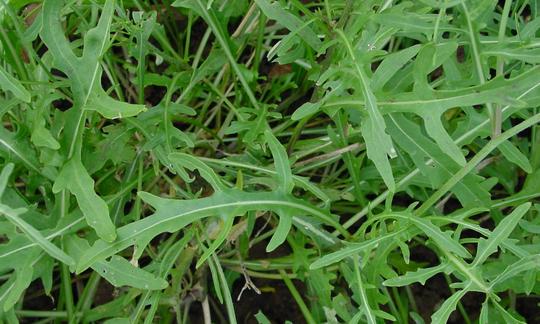

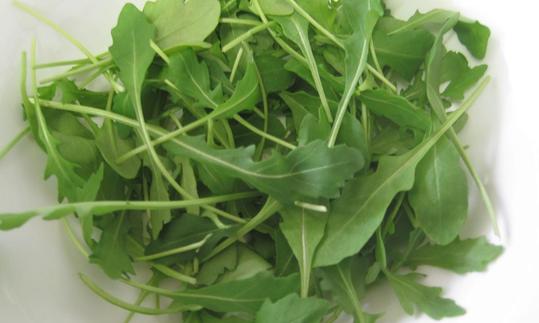

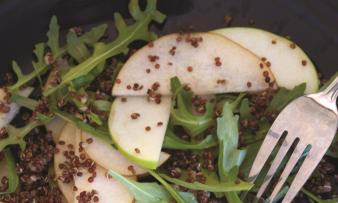
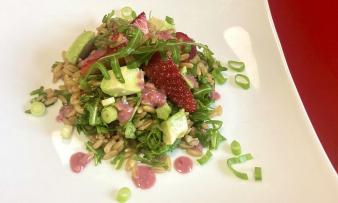
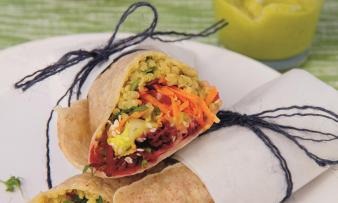





Comments